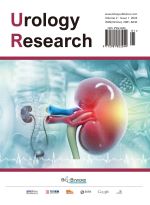Abstract
Background and methods: Bacillus Calmette-Guérin (BCG) intravesical instillation therapy is used to treat non-muscle invasive bladder cancer. Instilled BCG is typically collected at the time of initial urination and disposed of after sterilization with 10% sodium hypochlorite or household bleach, however, these methods can have unpleasant effects, such as pungent odor, rapid foaming, and fever. We investigated whether isopropanol can be used to sterilize and dispose of urine after BCG intravesical instillation therapy since isopropanol at a concentration of 33% or higher (70% isopropanol was used in this study) has the same disinfectant and bactericidal effects against Mycobacterium tuberculosis as 10% sodium hypochlorite or household bleach. Results: The use of isopropanol eliminated the unpleasant effects experienced with sodium hypochlorite and no growth of Mycobacterium tuberculosis was observed in culture tests. Conclusion: Isopropanol is safer than sodium hypochlorite, and should be considered for sterilizing and disposing of urine after BCG intravesical instillation therapy in the future. However, fire and ventilation precautions are required.
References
Japan Hospital Pharmacists Association, 2006, Drug Interview Form “Immucyst® for Bladder,” Revision 2.
Japan Hospital Pharmacists Association, 2015, Drug Interview Form “Immunobladder? Intravesical 40 mg,” Revision 3.
Japan Urological Association Infection Control Guideline Development Committee in Urology, 2009, Guidelines for Infection Control in Urology, 18–19.
Iwama K, Kadozawa M, Matsumoto H, et al., 1998, Disinfection Efficacy of Various Disinfectants Against Urinary BCG. BCG-BRM Therapy Journal, 1998(22): 65–71.
Kobayashi K, (ed.), 2002, Supplemented Guidelines for Disinfection and Sterilization, 1st edition, Herusu Publishing, Tokyo, 83.
Ministry of Health, Labour and Welfare, 2010, List of Controlled and Allowable Concentrations of Substances to be Measured in the Working Environment, 2, 5.
Japan Society for Occupational Health, 2016, Recommendations on Allowable Concentrations, etc. (FY2016). Journal of the Japan Society for Occupational Health, 2016(58): 181–212.
Director of the Environmental Management Bureau, Ministry of the Environment, 2004, Enforcement of the Law Partially Amending the Air Pollution Control Law (Notice): Kankan Daihatsu No. 05067001.
